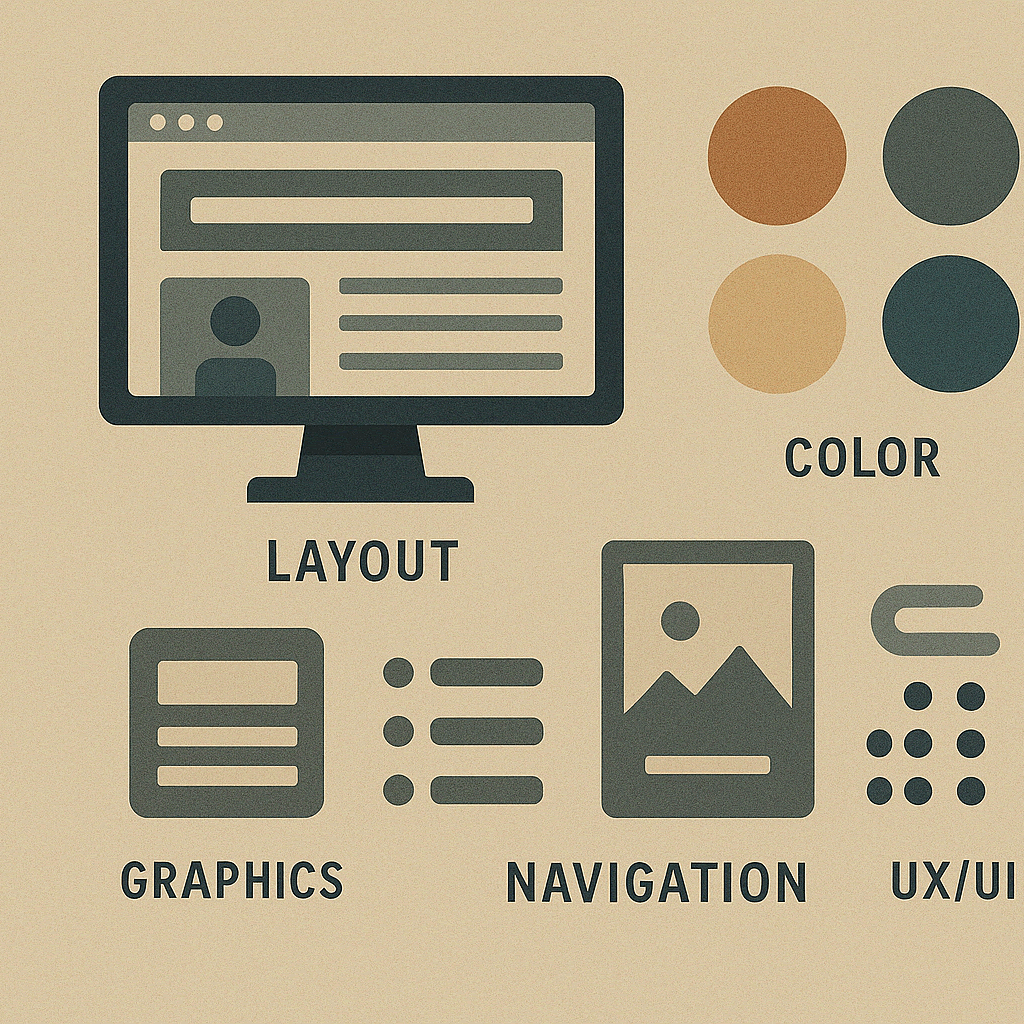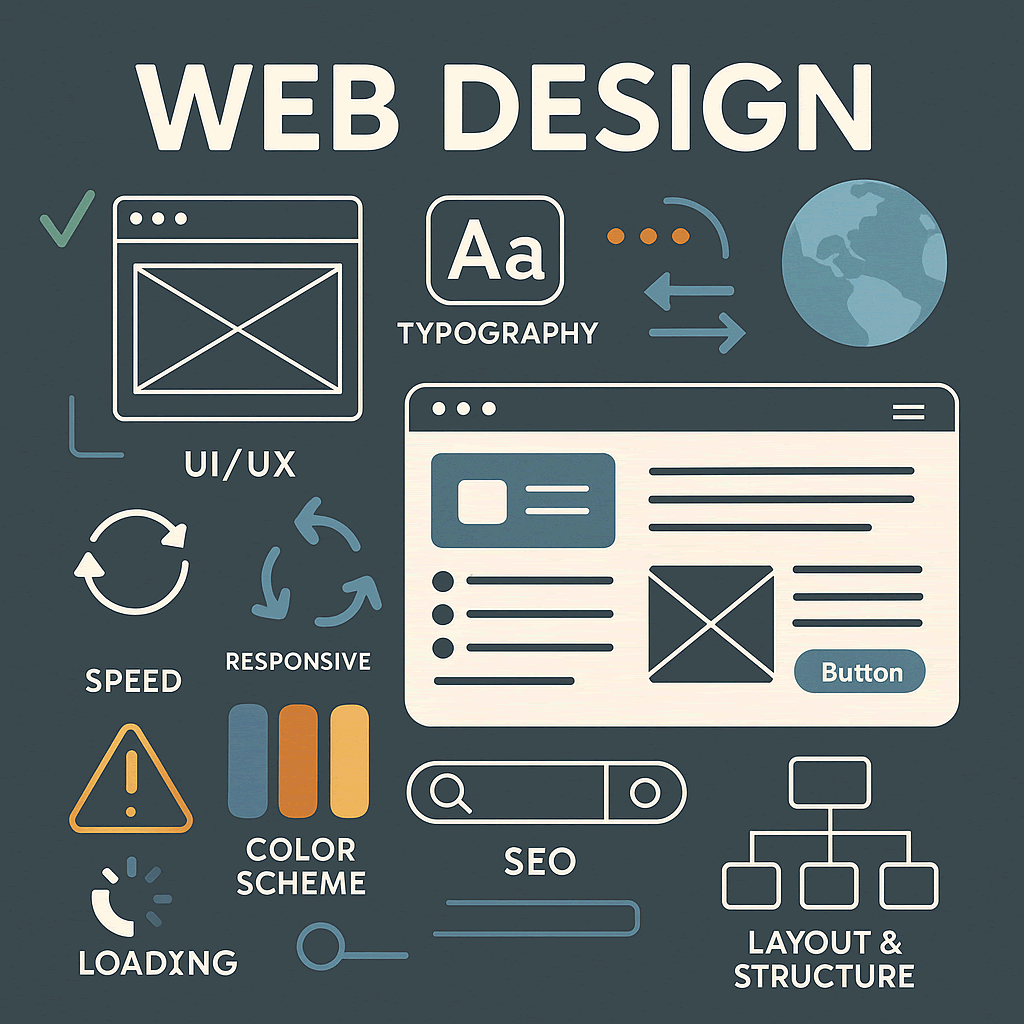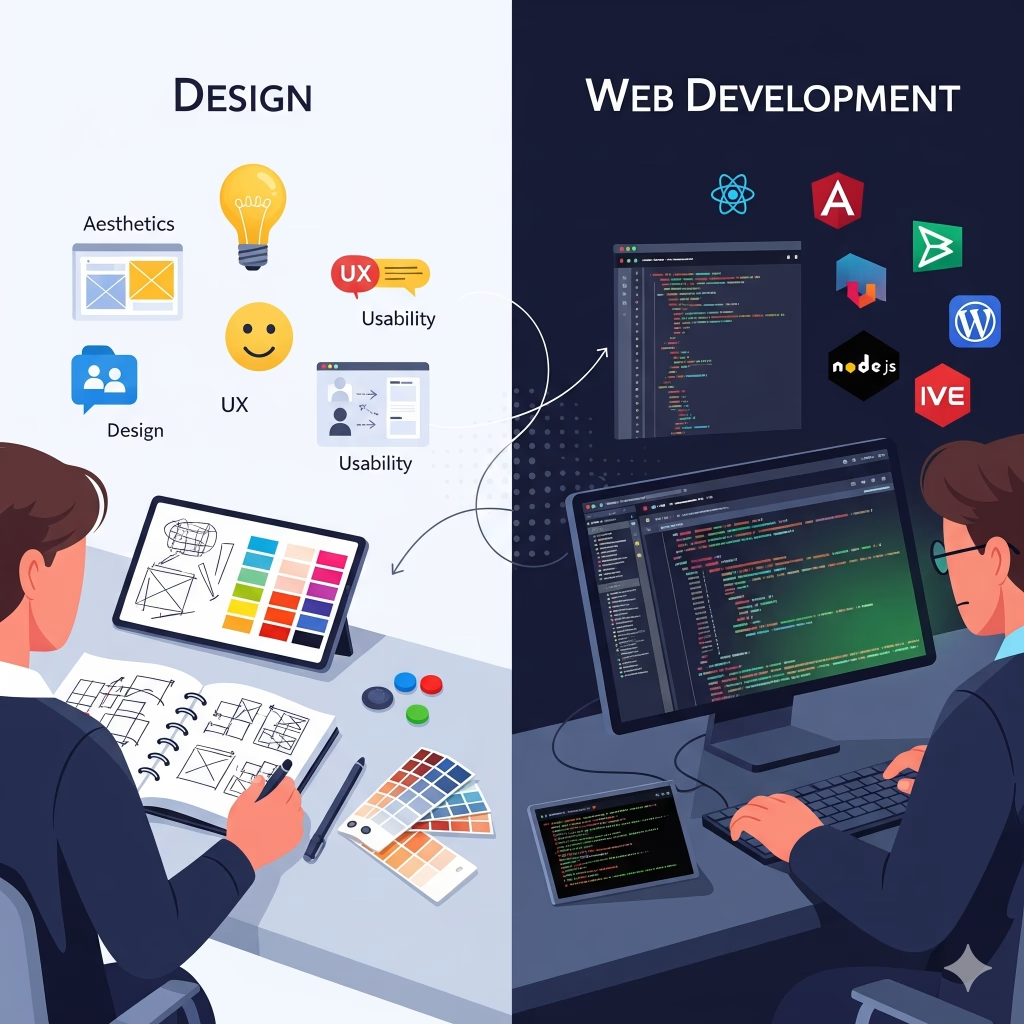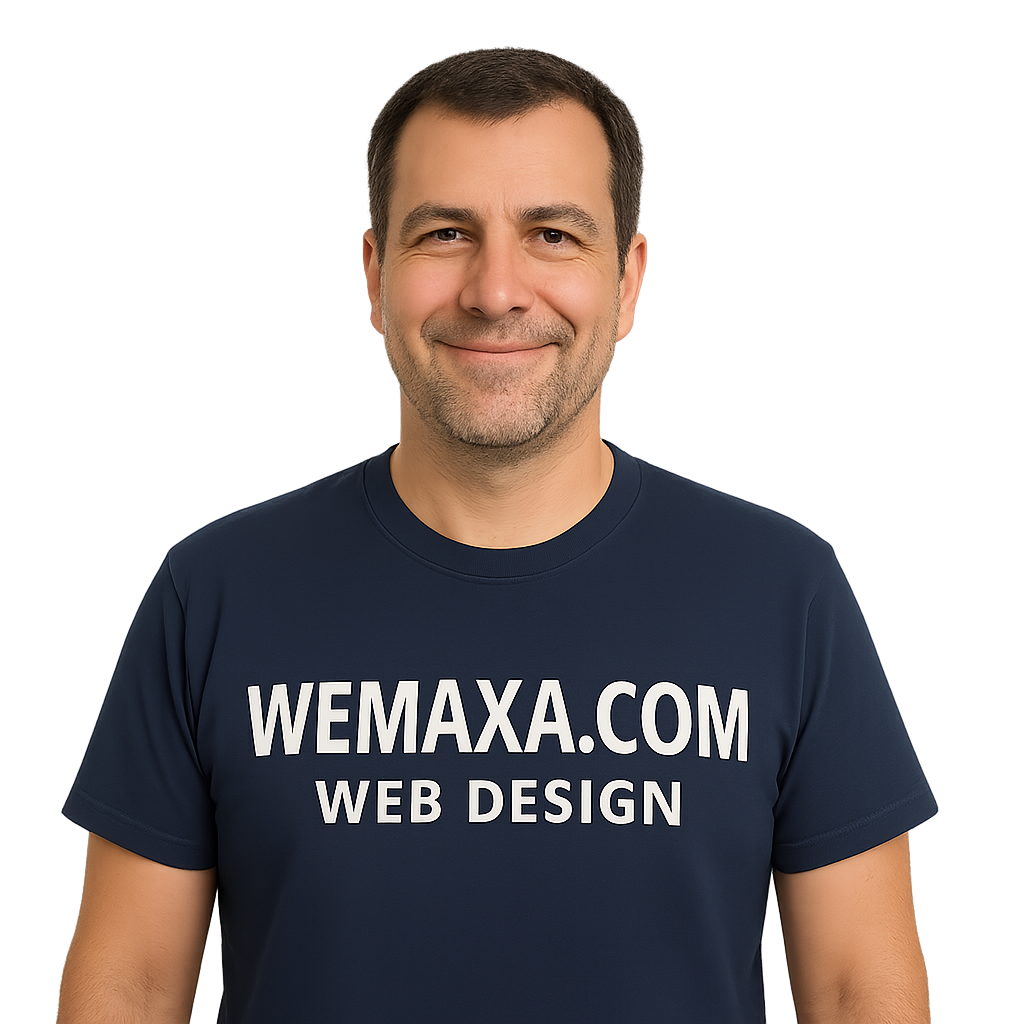


Popular Web Design Tools:
- Design & Prototyping: Figma, Adobe XD, Sketch
- Content Management Systems (CMS): WordPress, Shopify, Wix
- Front-End Development: HTML, CSS, JavaScript
Key Elements of Web Design:
- Layout & Structure – Organizing content in a visually appealing and logical way.
- Color Scheme – Choosing colors that align with branding and improve readability.
- Typography – Selecting fonts that enhance readability and aesthetics.
- Graphics & Images – Using visuals to engage users and convey information.
- Navigation – Designing intuitive menus and links for easy browsing.
- Responsiveness – Ensuring the site works well on all devices (desktop, tablet, mobile).
- User Experience (UX) – Making the site easy and enjoyable to use.
- User Interface (UI) – Designing interactive elements like buttons and forms.
- Loading Speed – Optimizing performance to reduce bounce rates.
- SEO-Friendly Design – Structuring content for better search engine visibility.
Web Design vs. Web Development:
- Web Design focuses on aesthetics, usability, and user experience (using tools like Figma, Adobe XD, or Sketch).
- Web Development involves coding and building the website (using HTML, CSS, JavaScript, and frameworks like React or WordPress).

MORE LINKS:
Responsive website?
Do I need a website?
How long design takes?
Design vs development?
Website redesign
Mobile friendly?
Template vs custom
How much it costs?
Good domain name?
WHAT IS WEB OR WEBSITE DESIGN?
Web design is the visual and functional layout of a website. It includes structure, colors, typography, usability and responsiveness to ensure a great user experience across all devices.
What is web design? At its core, web design is the discipline of creating and structuring websites in a way that combines aesthetics, usability, and functionality. Unlike traditional design, it is not confined to static visuals, but rather extends into interactive environments where user experience plays a central role. According to Wikipedia, web design encompasses multiple aspects including webpage layout, content production, and graphic design. From the perspective of a professional studio such as Wemaxa, web design is not only a creative craft but also a strategic tool that defines how brands connect with their audiences online.
The evolution of web design has been shaped by rapid technological innovation and shifting cultural needs. In the early 1990s, websites were simple HTML documents with limited styling options, yet today, the landscape includes responsive frameworks, dynamic interfaces, and immersive multimedia. The progression is well documented in the history of the web on resources like W3C, where evolving standards have introduced HTML5, CSS3, and JavaScript capabilities that dramatically changed what designers and developers can achieve. At Wemaxa, this evolution is not just history, but a guidepost for anticipating future trends.
User experience sits at the heart of modern web design. A visually appealing website that lacks intuitive navigation or quick loading speed will fail to engage users. The principles of user-centered design, outlined by organizations like Nielsen Norman Group, emphasize accessibility, clarity, and ease of interaction. As a studio, Wemaxa ensures that each project is tested for both aesthetic harmony and functional performance. By prioritizing UX, web design becomes more than an art form; it becomes an enabler of communication and conversion.

Importance of Good Web Design:
- Creates a strong first impression.
- Improves user engagement and retention.
- Boosts SEO rankings.
- Enhances brand credibility.
The role of aesthetics in web design cannot be overstated. Elements such as color theory, typography, whitespace, and imagery collectively establish the tone of a digital experience. According to Interaction Design Foundation, visual design shapes user emotions and perceptions, influencing decisions and building trust. At Wemaxa, we curate design systems that not only look beautiful but also align with a brand’s identity. This careful balance creates websites that resonate deeply with audiences while maintaining professionalism.
Responsive design has become a cornerstone of the field. With the majority of web traffic now originating from mobile devices, according to Statista, websites must adapt seamlessly across screen sizes. Responsive frameworks such as Bootstrap and CSS Grid enable designers to craft layouts that are flexible and fluid. At Wemaxa, responsive design is not treated as an afterthought but as a primary design principle, ensuring accessibility across all devices for every client project.
The intersection of design and development is another defining element of web design. While visual designers focus on aesthetics, developers bring those designs to life through code. Languages such as JavaScript, PHP, and frameworks like React or Vue provide the interactivity that modern users expect. At Wemaxa, our integrated approach ensures that design and development teams collaborate from the start, producing results that are both beautiful and technically sound.
SEO-friendly design is another vital layer of the craft. Google and other search engines reward websites that combine clean coding practices with optimized design for accessibility and content. Studies from Google’s SEO Starter Guide highlight how factors like site speed, structured content, and mobile optimization affect visibility. At Wemaxa, web design is executed with SEO in mind, ensuring that our clients not only have visually compelling websites but also strong positions in search engine rankings.
Brand alignment through web design is critical for building trust. A website often serves as the first point of interaction between a business and potential clients. The choice of colors, logos, messaging, and overall layout should reflect the brand’s identity. Academic discussions on branding, such as those on Harvard Business Review, emphasize consistency across all touchpoints. At Wemaxa, we craft digital identities that not only align with our clients’ branding strategies but also enhance them, ensuring continuity between online and offline presence.
Content integration defines the practical utility of web design. A beautiful website without meaningful content is a hollow shell. Articles, blogs, product descriptions, and multimedia must be integrated in a way that complements the design and aids communication. Resources like Content Marketing Institute underline the importance of content as part of digital strategy. Wemaxa takes a holistic approach, blending strong design with compelling content strategies that amplify engagement.
Security and compliance also belong to the conversation about web design. With increasing regulations like GDPR and growing concerns about cybersecurity, websites must be designed with safety in mind. At Wemaxa, security is woven into the design process through features like SSL integration, secure payment gateways, and user data protection. A secure website is not only a technical necessity but also a design responsibility that communicates reliability to users.


